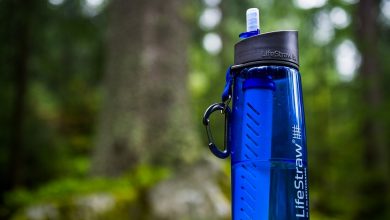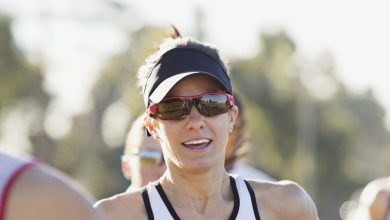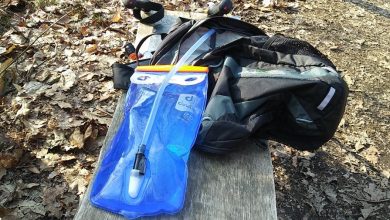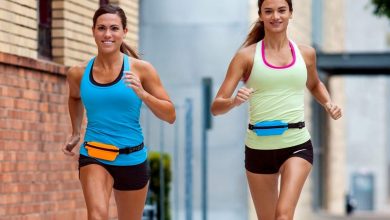Even though most people begin running and never again think about their form or how they can maximize their workouts, there is a science to running that more runners should think about. If they don’t, then they’re not fully maximizing their runs or tapping into all of their potentials.
With that being said, there is a way for runners to get the knowledge they need to get everything out of running they want to get out of it. And that way is by buying and reading some of the best running books. To show our readers some of the best ones available, we’ve included a selection of them below.
Quick Summary of Running Books



Reviews
Running Rewired: Reinvent Your Run for Stability, Strength, and Speed

This book is written by Jay Dicharry, a physical therapist, and a board-certified Sports Clinical Specialist. He also happens to be the author of one of the best books on running currently available. This book is designed to give the runner the tools he or she needs to improve their running strength and performance. And although it’s not a spiraled book that lays flat so that it can be easily referenced through workouts, it’s still a book that’s worth a read.
Using the latest biomechanical research, this book gives the runner the information to improve their workouts in just about 6-weeks. It does this by improving the runner’s form, something that can have a distinct effect on the runner’s ability to avoid injuries. According to the information in this book, the runner isn’t going to improve just by strength training alone, they also need to rewire their body and brain movements, so that they improve their form. And this book gives them the tools that do just that.
In this book, the runner will find eleven self-test that allows them to discern their body alignment, their joint mobility, their rotation, and their posture stability. It also features eighty-three workout exercises that help top build strength, further define power, helps remove obstacles that prevent the runner from reaching their full potential and helps to also build precision. Also included within the pages of this book are fifteen rewire workouts that help to amplify any training plan from 5K on up.
Using the principles outlined in this book, the runner will be able to develop a better spring that will propel their running to new heights. It will also help the runner to avoid many of the pitfalls and injuries that can sideline the runner as they attempt to take their running to the next level. It’s a book that’s designed to help runners become better runners.
- It contains tips to make the runner faster and stronger.
- It is easy to read and its information is easy to digest.
- It doesn’t lay flat for reference while working out.
Build Your Running Body: A Total-Body Workout Plan

Even though this running book isn’t suitable for all runners, it is a good book for all long-distance runners. It doesn’t matter if a person is a miler or someone who runs ultra-marathons, this book has all of the information he or she needs to take their body to the next level. It’s a book that’s organized into an easy-to-use manner that allows the readers to more quickly access the information within its pages.
Before we talk about this book, however, we do have to say that the paperback version was infinitely better than the digital version. That’s because the tables and charts that can be found in this book can be easily seen in the paperback version, but the same can’t be said of the Kindle version. The digital version can still be read, don’t get us wrong, it’s just that it’s a little more difficult to page though than the paperback.
Now that we got out of the way what we most dislike about this book, let’s take a few moments to talk about what’s actually inside of the book. Inside this book are 150 workouts that help the runner achieve their goals. Some of the workouts are weightlifting workouts, while others are cross-training workouts. Regardless, each one of them allows the individual to raise their performance to the level they want to raise it to.
Also found in this book ar over 390 photos, ten training levels suitable for runners of all levels, a detailed race strategy for the lead-up to competition day, exercises that help to prevent injury, and nutritional information on weight loss. Also found in this book are 30 recipes that help speed up recovery times, and tips on running apparel or track running progress. All of this makes this a comprehensive guide that’s more than worth it for the runner to read.
- This book is full of useful information.
- It provides information for all long-distance runners.
- The Kindle version is a bit difficult to read.
Daniels’ Running Formula

This book is written by Jack Daniels—not the alcoholic beverage—but, the doctor who has more than 5 decades of experience mentoring and coaching some of the top distance runners in the world. Some of the runners he’s coached and/or mentored include Ken Martin, Jim Ryun, Penny Werthner, Lisa Martin, Peter Gilmore, Alicia Shay, and Jerry Lawson. He’s a coach that has also worked as a track and cross-country coach at the State University of New York at Cortland, The University of Texas, and Oklahoma City University.
In this book, the reader will find the information they need to get the best running results possible. It’s a scientific approach to running that delivers all of the information that the runner could need to raise their game to the next level, although we do have to admit that the material can be hard to read. It’s hard to read not because it’s poorly organized, but because it’s data-dense that might be difficult for someone without a scientific background to fully take in.
Some of the information that can be found in this book includes information on training runs and training intensities, VDOT values, seasonal and fitness training, training for altitude, 1,500 to 2-mile training, 5K to 10K training, half marathon training, cross country training, aerobic training profiles, and the ingredients for success. It’s a well-rounded volume that many runners are going to appreciate using every single day that they train.
Keeping all of this in mind, we do think that this is a great volume for any runner to digest. It’s a little dense, but if the reader works through it they can pull valuable information that they won’t be able to receive anywhere else. That’s why we have no problem recommending either the paperback or the Kindle version of this book for any runner who seriously wants to improve their workouts.
- It’s a great scientific resource on running.
- This book can be difficult to read at times.
A Guide To Running Books
Before we began reviewing some of the best running books available, we searched high and low for a guide that would help us narrow down a search. We looked for a guide that would tell us the information that we should be searching for and the information that we should be avoiding. And do you know what we found? We found absolutely nothing on the subject.
Sure, we found a ton of guides where the author pushed their recommendations on the reader, but not one that gave the reader a concrete outline of what they should be considering when trying to choose a book from among the thousands of running books that exist. We feel that is a failing of many of the running magazines and websites, so we took it upon ourselves to create a guide that would be useful to anyone searching for a running book.
This guide is the culmination of our work. It’s our effort to guide our readers towards the information they need to succeed, instead of just hoisting our opinion on them. We hope that this guide serves all of our readers and helps them to purchase the running book that most fulfills their needs and goals. Having said that, let’s begin our journey together, shall we?
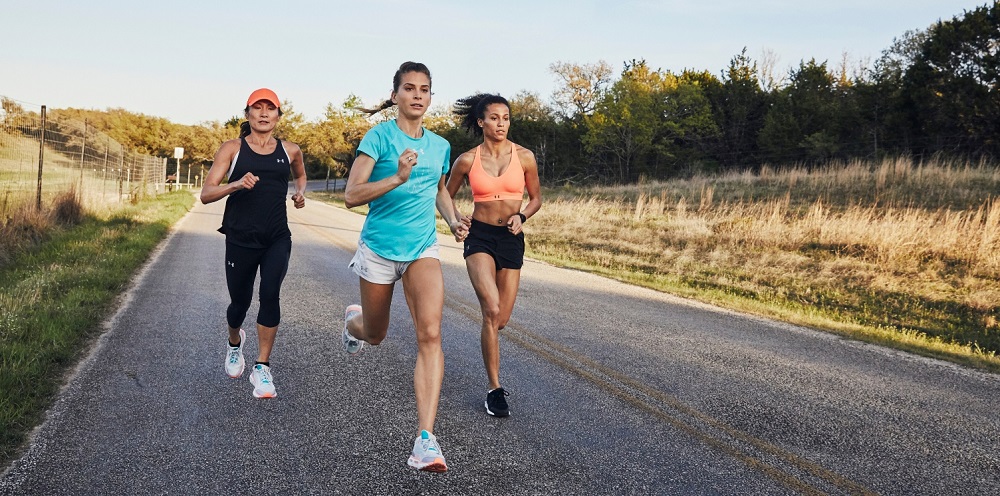
Step One: Define Your Goals
The first step in choosing the right running book for your needs is to define your goals. After all, not all of the running books available approach the subject in the same way. Some books are dedicated to providing information on proper training routines, books dedicated to dealing with nutrition, and still other books that are dedicated to helping the runner prepare for competition. And of course, some books are merely aspirational and don’t offer any helpful information a runner may need.
Step Two: Choose One Written By An Expert
The next thing we did while we were searching for a book on running was to get rid of all of the books that weren’t written by experts. And trust us when we say that there wasn’t an insignificant number of books that were written by people who did not know the subject they were writing about. It seems that anyone can write a book on running, even if they have no practical fitness education or running experience.
What constitutes an expert? Well, there are a few things that could make a person an expert on running. They could have considerable experience running, have experience coaching or they could have a degree in human biomechanics. Once you remove all of the authors who don’t fit one of these categories, then you can narrow down the books available and come closer to one that’s going to work well for you.
Step Three: Choose A Book On Your Type Of Running
It’s also important for the runner to choose a book that covers the type of running they engage in. A book on running a 10K marathon is of little use to a runner who mainly does sprints, and a book for the casual jogger is going to be of little use to the professional runner. Therefore, the runner should choose a book that covers their area of running expertise the best or covers the area of running that they want to become proficient in. If the runner can do that, then they can come closer to finding a book that’s truly useful for their needs.
Step Four: Choose One That’s Up To Date
Sure, your friend may have told you about a great running book that was published in the 1990s or early 2000s and helped to transform their life, but that doesn’t mean that the book is going to do the same for you. Information changes over the years as new information comes to light, so that book from 20-years ago might not be relevant anymore. And not only that, but the information in that book might even be dangerous to follow, so all runners should do themselves a favor and find a reasonably recent book. No older than the last 5-years or so should be found.
Step Five: Talk To Friends & Fellow Runners
We also think that your fellow runners might know of some books that helped to improve their fitness level or running technique, so it may be worth it to ask them. If you’re not friends with other runners, you can always check out review sites for suggestions, but we feel that your fellow runners are probably the best source of information available, so don’t be afraid to tap into their knowledge of the subject.
